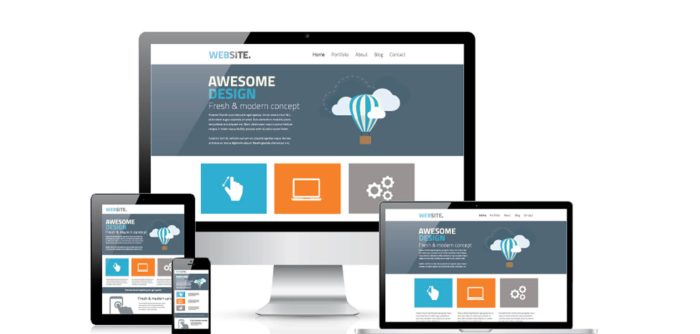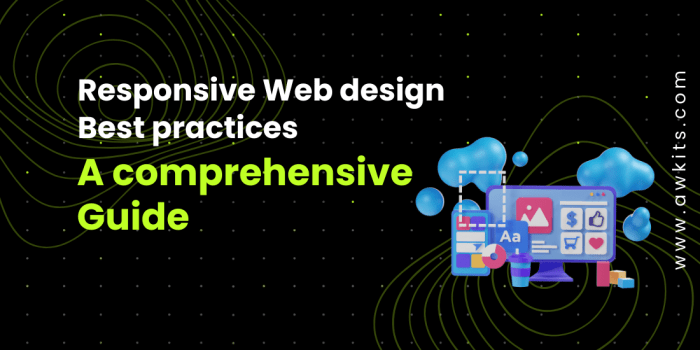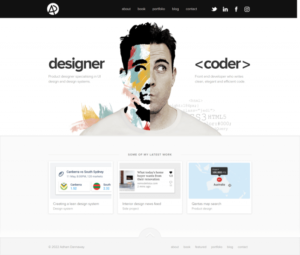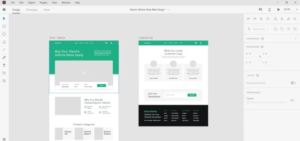
Responsive web design best practices are essential in today’s digital landscape where users access websites from a myriad of devices. The ability to deliver an exceptional user experience, regardless of screen size, is what sets successful websites apart from the rest.
By implementing fluid grids, effective media queries, and flexible images, web designers can ensure that their layouts adapt seamlessly to any device. This not only enhances user satisfaction but also positively influences search engine rankings, making responsive design a crucial element for any online presence.
Best Practices for Responsive Web Design

Responsive web design is essential in today’s digital landscape where users access websites from various devices, including smartphones, tablets, and desktops. Implementing best practices ensures a seamless experience regardless of screen size, fostering user engagement and satisfaction. By focusing on fluid grids, effective media queries, and flexible images, designers can create adaptable layouts that enhance usability and accessibility.
Fluid Grids
Fluid grids are a core principle of responsive web design, emphasizing the relative sizing of elements instead of fixed dimensions. This approach allows a layout to adapt smoothly to different screen sizes. Unlike traditional pixel-based layouts, fluid grids use percentages for width, enabling containers and their contents to scale proportionally as the viewport changes. This ensures that the design remains consistent and visually appealing across devices.
For example, a fluid grid layout can define a three-column design that adjusts to a single-column view on smaller screens. Here’s a simple CSS example:
.container
display: flex;
flex-wrap: wrap;
.column
flex: 1 1 30%; /* Adjusts to 30% width on larger screens
-/
box-sizing: border-box;
This structure allows columns to shrink or stack based on available space, providing users with an optimal viewing experience.
Media Queries
Media queries play a crucial role in responsive design by enabling different styles based on device characteristics like width, height, and orientation. They allow developers to apply specific CSS rules depending on the screen size, ensuring that the layout adapts effectively.
Effective media queries can target various breakpoints, allowing for tailored adjustments. Here are examples of commonly used media queries:
@media (max-width: 768px)
.column
flex: 1 1 100%; /* Stacks columns on smaller screens
-/
@media (min-width: 769px) and (max-width: 1024px)
.column
flex: 1 1 45%; /* Adjusts to two columns on tablets
-/
These media queries ensure that the design is responsive and user-friendly across a range of devices, from mobile phones to tablets and desktops.
Flexible Images
Flexible images are vital for maintaining a responsive layout, allowing images to scale properly within their containing elements. Ensuring that images are adaptable helps avoid issues like distortion or overflow, which can disrupt the user experience.
To achieve flexible images, use relative units or set max-width properties. This approach enables images to resize according to the viewport while preserving their aspect ratio. Here’s a CSS example:
img
max-width: 100%; /* Ensures images do not exceed their container's width
-/
height: auto; /* Maintains aspect ratio
-/
By implementing these techniques, designers can create visually appealing and responsive designs that effectively convey content, regardless of the device being used. This leads to a better overall experience for users and enhances the effectiveness of the website.
Impact of Responsive Design on Search Engine Marketing
Responsive web design significantly enhances user experience, which in turn can influence search engine rankings. When users encounter a website that adapts seamlessly to their device—be it a smartphone, tablet, or desktop—they are more likely to engage with the content, leading to longer session durations and reduced bounce rates. These factors are crucial for search engine algorithms, which prioritize user engagement metrics when determining site rankings.
In the realm of Search Engine Marketing (SEM), the shift towards mobile-first indexing by search engines like Google illustrates the critical need for responsive design. Google now predominantly uses the mobile version of a site for indexing and ranking, underscoring the importance of creating an optimized mobile experience. If a website does not perform well on mobile devices, it risks dropping in search rankings, which can directly affect visibility and traffic.
Mobile-First Indexing Implications for Web Design
Mobile-first indexing necessitates that web designers prioritize the mobile user experience in their design choices. This means ensuring that the mobile site contains the same content as the desktop version, as well as optimizing loading speeds and accessibility. The implications extend to the following key areas:
- Content Consistency: Both mobile and desktop versions must provide the same valuable information, ensuring users find what they need regardless of their device.
- Page Speed Optimization: Faster load times on mobile devices enhance user experience and are critical for improved rankings; Google’s Core Web Vitals update emphasizes this aspect.
- Structured Data Use: Implementing structured data can optimize how search engines interpret content, aiding visibility across devices.
- User Interface Design: A clean, intuitive design tailored for touch interactions can greatly improve user satisfaction and engagement rates.
Considering these aspects is crucial for effective search engine marketing strategies.
“Responsive design not only boosts user experience but also acts as a powerful tool for improving search engine visibility.”
Best Practices for Integrating Responsive Design with Paid Search Strategies
Integrating responsive design into paid search strategies is essential for maximizing ad performance and user engagement. Here are some best practices to consider:
- Ad Customization: Create responsive ads that automatically adjust to fit various device sizes, ensuring a cohesive experience from ad click to landing page.
- Device-Specific Targeting: Tailor ad content based on the device used, focusing on mobile-friendly offers or calls-to-action.
- Landing Page Optimization: Ensure landing pages maintain a consistent branding and design across devices, enhancing user trust and conversion rates.
- Monitor Performance Metrics: Regularly analyze ad performance on different devices and optimize campaigns based on user behavior and conversion path effectiveness.
By applying these practices, marketers can harness the full potential of responsive web design, ensuring their paid search strategies achieve maximum efficiency and effectiveness.
Role of Responsive Web Design in Social Media and Promotion
In today’s digital landscape, the intersection of responsive web design and social media has become increasingly vital for effective online promotion. As social media platforms continue to evolve, optimizing landing pages for social media sharing is essential. A well-optimized landing page not only enhances user experience but also boosts engagement and conversions when shared across various platforms.
Responsive design facilitates seamless access to content, ensuring that users have a consistent experience regardless of the device they use. This adaptability is particularly important in the realm of video marketing, which has become a dominant form of content across social media platforms.
Importance of Optimizing Landing Pages for Social Media Sharing
Crafting landing pages that are tailored for social media sharing can significantly impact campaign performance. A landing page that is visually appealing, easy to navigate, and mobile-friendly can lead to higher click-through rates and better user engagement. Here are key factors to consider for optimizing landing pages:
- Clear Call-to-Action: Ensure that your landing page has a prominently displayed call-to-action (CTA) that motivates users to engage further, whether that means signing up for a newsletter, downloading a resource, or making a purchase.
- Social Sharing Buttons: Include easily accessible social sharing buttons that allow users to share your content with their networks, enhancing reach and visibility.
- Compelling Visuals: Use high-quality images and videos that resonate with your target audience and encourage sharing on visually-focused platforms like Instagram and Pinterest.
- Mobile Optimization: Since many users access social media through mobile devices, ensure that your landing pages load quickly and look great on smaller screens.
Responsive Design Enhances Video Marketing Effectiveness
The integration of responsive web design significantly enhances the effectiveness of video marketing across devices. Videos are a powerful tool for storytelling and engagement, and their impact is amplified when they are accessible on any device. Key points include:
- Adaptive Playback: Responsive design allows videos to adjust in size and quality based on the user’s device, ensuring a smooth viewing experience with minimal buffering.
- Increased Engagement: Videos embedded within responsive designs tend to generate more shares and interactions, as they are easily viewable on smartphones and tablets, which are widely used for social media browsing.
- Benefits: Video content can improve search engine rankings, and when paired with responsive design, it can attract a broader audience from social platforms, leading to increased organic traffic.
Strategies for Promoting a Responsive Site on Social Networking Platforms
Promoting a responsive website effectively requires strategic thinking tailored to the unique characteristics of each social media platform. Here are some strategies to consider:
- Platform-Specific Content: Tailor your content to fit the tone and style of each social media platform. For example, use professional visuals on LinkedIn while keeping it casual on Twitter.
- Engagement-Driven Posts: Create posts that encourage interaction, such as polls, questions, or user-generated content that can lead to organic sharing and increased visibility.
- Leverage Influencers: Collaborate with influencers who align with your brand to tap into their audience and promote your responsive site through authentic recommendations.
- Consistent Branding: Maintain consistent branding across all platforms, including colors, logos, and messaging, to enhance recognition and trust when users encounter your links.
Last Word

In summary, mastering responsive web design best practices is integral to staying competitive in a rapidly evolving digital world. By focusing on user experience and embracing the principles discussed, you can create websites that are not just visually appealing but also optimized for performance across all devices.
Popular Questions
What is responsive web design?
Responsive web design is an approach that ensures websites provide an optimal viewing experience across a wide range of devices, from desktops to mobile phones.
Why is mobile-first indexing important?
Mobile-first indexing prioritizes the mobile version of a website for indexing and ranking, making responsive design crucial for .
How do media queries work?
Media queries enable the application of different styles based on device characteristics like screen width, height, and resolution, allowing for tailored layouts.
What role do images play in responsive design?
Images must be flexible and able to scale properly to maintain quality and performance on different devices, enhancing the overall user experience.
How can social media impact responsive design?
Responsive designs improve the effectiveness of social media promotions by ensuring that shared content displays well on various devices, increasing engagement.





